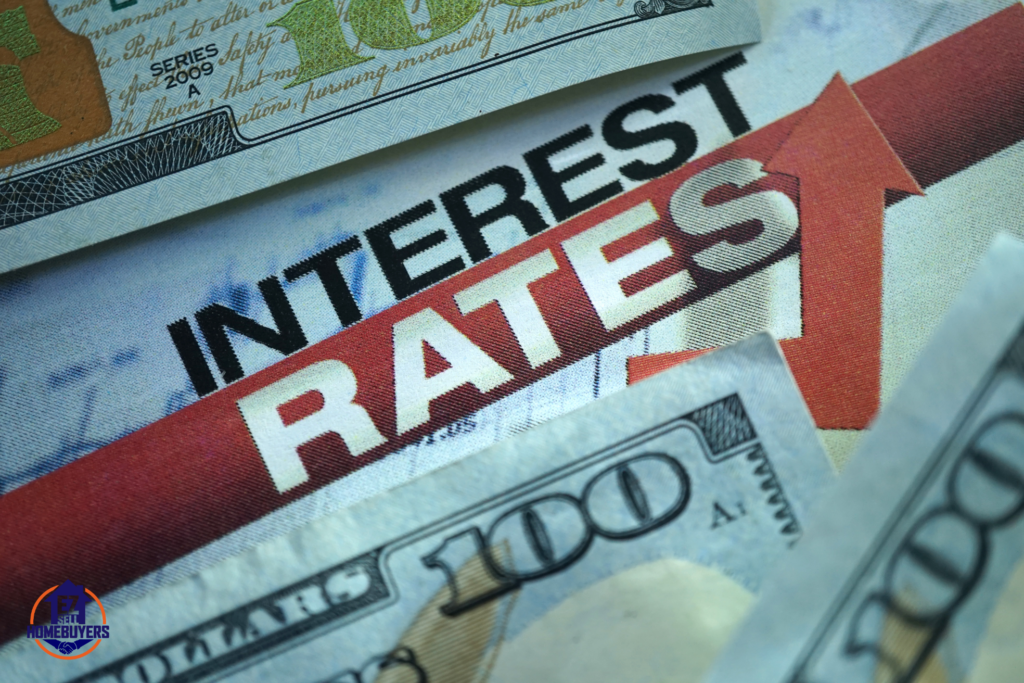Understanding Interest Rates and Their Impact on Ohio’s Housing Market
The real estate market in Ohio has faced significant challenges due to rising mortgage rates, affecting affordability for homebuyers and investors alike. Over the past two years, the Federal Reserve’s efforts to combat inflation have driven up borrowing costs, making it more expensive to purchase a home.
But what will it take for interest rates in Ohio to decrease? The answer lies in a combination of economic factors, Federal Reserve policies, inflation trends, and local market dynamics.
In this article, we’ll break down the primary influences on mortgage rate forecasts in Ohio, provide insights from real estate and finance experts, and offer data-driven analysis to help you understand when rates might start declining.

1. Federal Reserve Policy and Interest Rate Decisions
The Federal Reserve’s actions are the most significant driver of mortgage rates in Ohio. The Fed sets the federal funds rate, which influences how much banks charge for lending.
🔹 How Federal Reserve Rate Changes Impact Ohio’s Mortgage Rates:
- When the Fed raises rates, borrowing becomes more expensive, leading to higher mortgage rates.
- When the Fed lowers rates, borrowing becomes cheaper, reducing home loan rates in Ohio.
In 2022-2023, the Federal Reserve aggressively raised interest rates to slow down inflation, pushing Ohio mortgage rates above 7%, a level not seen since the early 2000s.
📊 Expert Insight:
According to Lawrence Yun, Chief Economist at the National Association of Realtors (NAR):
“The Federal Reserve’s future rate cuts will depend entirely on whether inflation continues to ease. If inflation trends downward consistently, we could see rate cuts by late 2024 or early 2025.”
💡 Key Takeaway: Until inflation reaches the Fed’s target of 2%, expect Ohio mortgage rates to remain elevated.
2. Inflation Must Decrease to Sustainable Levels
🔹 How Inflation Affects Mortgage Rates:
- High inflation → Higher interest rates (to curb excess spending)
- Low inflation → Lower interest rates (to stimulate borrowing and investment)
The Consumer Price Index (CPI), a key inflation measure, peaked at 9.1% in June 2022, prompting the Fed to hike rates aggressively. As of early 2024, inflation has moderated to around 3.4%, but it remains above the Fed’s 2% goal.
📊 Data Insight:
- Inflation in Ohio: Currently hovering at 3.2%, according to the Bureau of Economic Analysis.
- Fed’s Target Inflation Rate: 2.0%
- Expected Rate Cuts: Fed officials suggest rate cuts could begin in late 2024 if inflation continues trending downward.
💡 Key Takeaway: Inflation must consistently decline before the Fed feels comfortable lowering interest rates.
3. Economic Growth and Employment Trends in Ohio
While a strong economy is usually positive, it can delay interest rate cuts. If Ohio’s job market remains strong, the Fed may hesitate to lower rates, fearing it could reignite inflation.
🔹 Ohio’s Employment & Economic Data:
- Unemployment Rate in Ohio (Jan 2024): 4.1% (Close to the national average)
- Job Growth: Strong in healthcare, logistics, and manufacturing sectors
- Wage Growth: Increasing at a moderate pace
📊 Expert Insight:
According to Mark Zandi, Chief Economist at Moody’s Analytics:
“If job growth in Ohio slows while inflation continues to ease, the Fed will have no choice but to start cutting rates. However, if the job market remains robust, rate cuts may be delayed until 2025.”
💡 Key Takeaway: If Ohio sees rising unemployment or slower wage growth, the Fed will be more likely to cut rates sooner.
4. Housing Market Supply and Demand in Ohio
🔹 Current Ohio Housing Market Trends:
- Low Inventory: Housing supply remains tight, keeping prices high despite higher mortgage rates.
- Declining Buyer Demand: Due to affordability concerns, home sales have slowed in cities like Columbus, Cincinnati, and Dayton.
- New Construction: Builders have increased construction, but supply still lags behind demand.
💡 Key Takeaway: If more housing inventory enters the market, home prices could stabilize, making homeownership more affordable once rates drop.
5. Global Economic and Political Factors
Beyond domestic policies, global events can also influence Ohio mortgage rates.
🔹 How Global Events Impact U.S. Interest Rates:
- Geopolitical Instability: Wars, trade conflicts, or economic crises (like the 2008 recession) often cause investors to seek safe assets, lowering U.S. bond yields → leading to lower mortgage rates.
- Global Inflation Trends: If inflation remains high worldwide, the U.S. Fed may delay rate cuts.
- Foreign Investment in U.S. Bonds: Increased demand for U.S. Treasury bonds can push down interest rates.
💡 Key Takeaway: Global instability could accelerate rate cuts, while a strong world economy may keep rates higher for longer.
When Will Interest Rates Drop in Ohio?
📌 Projected Rate Cut Timeline:
- If Inflation Falls Below 3% → Possible Rate Cuts by Late 2024
- If Inflation Stays High → Rate Cuts Delayed to 2025
- If a Recession Occurs → Emergency Rate Cuts Possible in 2024
📊 Mortgage Rate Forecast for Ohio
| Year | Expected 30-Year Mortgage Rate (%) |
|---|---|
| 2023 | 7.0 – 7.5% |
| 2024 | 6.0 – 6.5% |
| 2025 | 5.5 – 6.0% |
Final Thoughts: How Homebuyers Can Prepare
🏡 Actionable Tips for Homebuyers & Investors:
✅ Monitor inflation and Fed rate decisions.
✅ Consider buying now and refinancing later if rates drop in 2025.
✅ Explore creative financing strategies (e.g., seller financing, adjustable-rate mortgages).
✅ Work with a knowledgeable real estate agent to time the market effectively.
💡 Bottom Line: Interest rates in Ohio will eventually decline, but timing will depend on inflation, job growth, and the Fed’s response. Smart buyers will stay informed and adapt their strategies accordingly.
FAQ: What Needs to Happen for Interest Rates to Go Down in Ohio?
1. Why are mortgage rates in Ohio so high right now?
Mortgage rates in Ohio are high due to the Federal Reserve’s aggressive rate hikes aimed at controlling inflation. The Fed increases interest rates to slow down borrowing and spending, which, in turn, raises mortgage costs for homebuyers.
2. What factors influence interest rates in Ohio?
Several key factors impact interest rates in Ohio, including:
- Federal Reserve policies (rate hikes or cuts)
- Inflation levels (higher inflation leads to higher interest rates)
- Employment and economic growth
- Housing market trends and inventory
- Global economic conditions
3. When will interest rates start to go down in Ohio?
Experts predict that interest rates in Ohio could start to decline by late 2024 or early 2025, depending on whether inflation continues to decrease and the economy slows enough to prompt the Federal Reserve to cut rates. However, the timeline is uncertain and depends on future economic conditions.
4. What does inflation have to do with interest rates?
Inflation affects interest rates because the Federal Reserve raises rates to slow down rising prices. When inflation is high, borrowing costs increase. If inflation drops closer to the Fed’s target of 2%, we are more likely to see lower mortgage rates in Ohio.
5. How does the job market affect mortgage rates?
A strong job market with low unemployment and rising wages can delay rate cuts because it signals a healthy economy, which may keep inflation higher. On the other hand, if job losses increase, the Fed might lower interest rates to stimulate economic growth.
6. What impact does the housing market have on interest rates?
A tight housing supply and strong demand keep home prices high, even when mortgage rates rise. If more inventory becomes available or home sales slow significantly, the Fed might consider rate cuts to make housing more affordable.
7. Will global economic conditions impact mortgage rates in Ohio?
Yes, international events such as economic crises, geopolitical instability, and foreign investment trends can influence U.S. interest rates. When global investors buy U.S. Treasury bonds, it can lower yields, reducing mortgage rates in Ohio and across the country.
8. Should I wait for lower interest rates before buying a home in Ohio?
It depends on your financial situation. Some buyers choose to purchase now and refinance later if rates drop, while others may wait if they believe rates will decline soon. If home prices continue rising, waiting could mean paying more overall.
9. How can homebuyers prepare for potential rate cuts?
- Monitor inflation and Federal Reserve announcements
- Consider locking in a rate with a refinance option
- Explore seller financing or adjustable-rate mortgages
- Work with a knowledgeable real estate professional
10. What is the best way to stay updated on mortgage rate changes?
To stay informed about Ohio mortgage rate forecasts, follow:
- Federal Reserve announcements
- Real estate market reports
- Financial news sources like the National Association of Realtors (NAR) or mortgage industry updates

